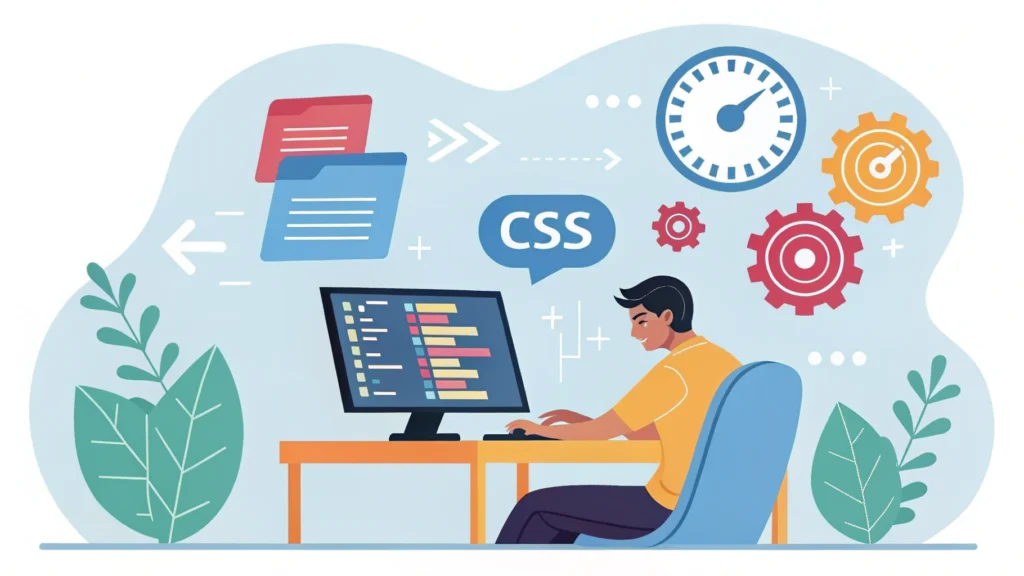
Introduction
CSS minification is a great way to improve your website’s loading speed—but if done incorrectly, it can break layouts, cause display issues, and lead to debugging nightmares. Whether you’re a seasoned developer or just getting started, it’s important to understand the common CSS minification errors and how to fix them.
In this guide, we’ll cover the most frequent CSS minification problems, how to prevent them, and how to use safe tools like the WebToolsLab CSS Minifier to get clean, optimized code without breaking your site.
Why CSS Minification Matters (But Needs Caution)
Minifying CSS removes unnecessary characters—like whitespace, comments, and line breaks—to reduce file size and boost performance. But poorly minified code can result in:
- Missing styles
- Layout shifts
- Unexpected behavior in different browsers
- Broken mobile responsiveness
That’s why it’s essential to understand both the benefits and potential risks of CSS minification.
Common CSS Minification Errors (And How to Fix Them)
1. Missing Semicolons or Syntax Errors
Problem:
If your original CSS is missing semicolons or has incorrect syntax, the minifier may remove what it thinks is extra spacing—but it actually breaks the code.
Fix:
Always validate your CSS before minifying. Use a linter or editor that highlights syntax issues.
✅ Pro Tip: Use WebToolsLab CSS Minifier – it handles well-formatted CSS smoothly and shows output instantly for review.
2. Minifying CSS with Inline Media Queries
Problem:
Nested or complex media queries may not minify properly, especially when missing curly braces or improperly closed blocks.
Fix:
Check that all media queries are complete and closed correctly. Also, avoid writing long inline media rules—use clear breakpoints with full blocks.
3. Accidental Removal of Critical Comments
Problem:
Some CSS comments are used to instruct frameworks (like /*! important */ or theme-specific notes). Minifiers might strip these out.
Fix:
Use preserved comments like /*! comment */ if needed. The exclamation mark ! tells some minifiers to keep the comment.
4. Conflicts with Vendor Prefixes
Problem:
Autoprefixed CSS may include rules like -webkit-, -moz-, and -ms-. Minification may remove or collapse these incorrectly.
Fix:
Use a post-processing tool after minification (e.g., PostCSS) to ensure prefixes are intact. Also, test layout compatibility across browsers.
5. Incorrectly Minifying SCSS or LESS Files
Problem:
Some users try to minify preprocessor files like .scss or .less instead of the compiled CSS output, which causes errors.
Fix:
Always compile your SCSS/LESS into standard CSS first, then run the minified result through a tool like the CSS Minifier.
Best Practices to Prevent CSS Minification Errors
- ✅ Validate your CSS before minifying
- ✅ Use a trusted tool like WebToolsLab CSS Minifier
- ✅ Backup your original file before replacing it
- ✅ Test the minified version on staging or dev environments
- ✅ Avoid manually editing minified code
Bonus Tip: Use Developer Tools to Debug Minified CSS
If something breaks:
- Open Chrome DevTools (F12)
- Inspect the element with broken styling
- Use the “Sources” tab to view the stylesheet
- If needed, reformat the code (prettify) to debug
Consider using the HTML Minifier and JS Minifier alongside your CSS workflow for a complete performance upgrade.
FAQs
Why does my CSS break after minifying?
It usually happens due to missing semicolons, invalid syntax, or improper nesting. Always validate your code and test the output before deploying.
Can I minify CSS safely for production?
Yes. As long as your original CSS is clean and you use a trusted tool like WebToolsLab CSS Minifier, minification is safe and highly recommended.
How can I fix a broken layout after minifying CSS?
Start by checking for missing syntax in the original file. Then minify again, and test in different browsers. You can also use developer tools to debug line by line.
Conclusion
Minifying CSS is essential for faster loading and better Core Web Vitals, but careless minification can cause unwanted issues. By knowing what to watch for and using the right tools, you can avoid these pitfalls.
Stick with the WebToolsLab CSS Minifier for clean and safe minification, and explore related tools like the HTML Minifier and JS Minifier to keep your entire site optimized.
Speed up your site without breaking it—start minifying smarter today with WebToolsLab.